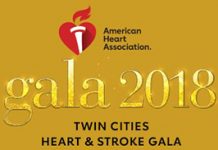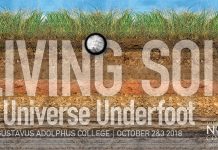The Twin Cities is home to one of the country’s largest universities and the state’s only research university: the University of Minnesota (U of M). Though it’s large—in space, with five campuses around the state, and in population, with more than 60,000 students—the school remains intimate and secure with its tree-filled lawns and neoclassical buildings. A city within a city, the school has its own Central Park in Northrop Mall.
A place where students can rest between classes, the mall is capped on one end by Northrop Auditorium, while the newly renovated Coffman Memorial Union presides over the other end along the Mississippi. The University is ranked among the top three public research facilities in the country and is 10th in research and development spending. Its medical school and hospital innovations have included the heart pacemaker, heart-lung machine and transplant research. With more than 370 areas of study and an international population of more than 4,500, the University is distinctively diverse and the perfect home for students of all backgrounds.
In addition to the U of M, 12 four-year colleges, 10 community colleges, nine technical institutes and several technical and trade schools are located in the Twin Cities. Living and studying in a metropolitan area exposes students to many employment, internship and volunteer opportunities on top of numerous arts and cultural events. Whether your 18-year-old is just starting out or it’s you who’s looking to continue your education, the Twin Cities is sure to have a school that fits.
Metropolitan State University, a school that creates opportunities for working adults through day, evening and weekend courses, has campuses in both Minneapolis and St. Paul as well as three additional sites covering all corners of the Twin Cities. Offering more than 60 undergraduate and graduate degree programs, Metro State hosts 10,000 students per year. In December 2004, Metro State’s Minneapolis location moved to share a campus with Minneapolis Community and Technical College (MCTC). Located on the edge of downtown’s Loring Park, MCTC is one of the most ethnically diverse colleges in the state and offers certificates, diplomas and two-year associate’s degrees. By joining together, the two campuses combine their resources and MCTC graduates have easy access to bachelor’s and master’s programs through Metro State.
Two private four-year colleges have campuses in both Minneapolis and St. Paul: St. Thomas University and the College of St. Catherine (St. Kate’s). St. Thomas is Minnesota’s largest independent college or university. A Catholic college, St. Thomas offers 87 majors and 50 graduate degree programs between its two campuses and has a combined undergraduate and graduate population of 11,000. St. Kate’s, which celebrated its centennial in 2004, is the largest Catholic college for women in the country, enrolling around 5,000 students.
St. Paul houses two more prestigious schools within its city limits. Macalester College, a private liberal arts school with less than 2,000 students, is located in the middle of beautiful, residential St. Paul, adding a young feel to the historic city. Hamline University was the first institution of higher education in the state, founded by Methodist pioneers more than 150 years ago. More than 4,000 students study in its undergraduate, law and graduate schools.
The Twin Cities also presents numerous colleges for those looking to specialize. Aveda Institute is an internationally acclaimed center of learning for those interested in cosmetology, esthiology or massage. Gourmets-in-training can head to the Le Cordon Bleu College of Culinary Arts, the first program of its kind to be established in the United States. The Minneapolis College of Art and Design offers creative and artistic students degrees in design, fine arts, media arts and visualization. The musically inclined will find it all at McNally Smith College of Music, with courses in music business, audio recording and production or music performance through guitar, bass, drums, keyboards, brass, woodwinds or voice.
My Twin Cities
ROBERT BRUININKS
President, University of Minnesota
Where were you born and raised?
Byron Center, Mich.
Where do you live now? Merriam Park neighborhood of St. Paul, Minn.
Age: 64
Five things you love about the Twin Cities:
1. Cultural life—arts, music, etc.
2. Great educational institutions and commitment to education.
3. Great parks and open spaces.
4. The highly civil and civic-minded culture.
5. Great restaurant venues.
What distinguishes the Twin Cities from other metropolitan areas in terms of higher education opportunities? The Twin Cities offers its residents extraordinary access to and opportunities in higher education. The main campus of the University of Minnesota has the uniqueness of being located on the majestic banks of the Mississippi and in a vibrant urban setting. In 2004-05 and 2005-06, the University of Minnesota, Twin Cities, enrolled the second largest number of students of any campus in the United States.
It is Minnesota’s only research and land-grant university and regularly ranks among the top 5 to 7 public research universities in the United States, and regularly in the top 30 to 35 universities worldwide. The Twin Cities area has 10 community colleges and the Metropolitan State University of the Minnesota State Colleges and Universities System, as well as some of the nation’s best liberal arts colleges nearby. Because of these resources, the Twin Cities area has one of the highest per capita rates of baccalaureate degrees among its residents and enjoys one of the best, most creative economies in the nation.






